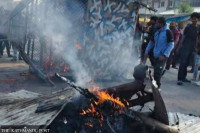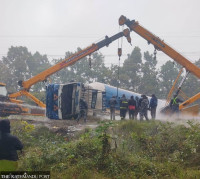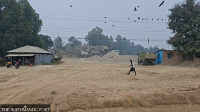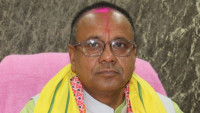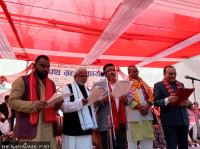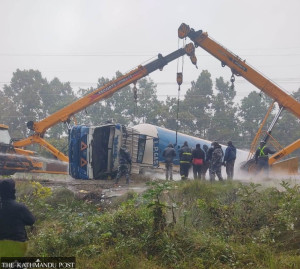Madhesh Province
Province 2 comes up with relief package for affected people
Workers, the poor and farmers vulnerable to the lockdown enforced in view of the Covid-19 crisis will receive both food items and cash as the provincial government kicks off relief distribution.
Chandan Kumar Mandal
The Province 2 government’s relief package for the families affected by the lockdown enforced in the wake of the global Covid-19 outbreak will exclude government officials and any salaried employees as the aid is meant only for the poor, farmers and daily wage workers.
The guidelines for relief materials distribution and monitoring for affected groups, endorsed by the provincial government on Tuesday, say the relief will not cover families having any members employed by the government and in the state apparatus, and those who run a business or receive salary or pensions from the government or non-government organisations.
“The relief package has been brought only to provide respite for workers—having no income source other than daily wages, the poor and financially marginalised farmers,” Shailendra Prasad Shah, the Province 2 minister for land management, agriculture and cooperatives, told the Post. “Some people who have no jobs are just unemployed; they will also get relief materials.”
A committee, under the coordination of the ward chairperson, will lead relief distribution at the local level. The committee, which is also mandated to identify groups that are most vulnerable to the ongoing lockdown, consists of the representatives from nationally-recognised political parties, the Nepal Army, Armed Police Force, Nepal Police, and the ward office secretary, ward chairperson and principal of a ward level school.
For executing the relief plan that the Province 2 government rolled out on Monday, local councils have received funds from the provincial government. The Janakpur administration had decided to provide Rs 2.5 million for a metropolitan city, Rs 2 million for a sub-metropolitan city, Rs 1.5 million for a municipality and Rs 1 million for a rural municipality to aid vulnerable families in their areas during the lockdown.
“The size of the package and the food items included will be decided by the local level committee, to be funded with the given budget,” said Shah. According to the guidelines, relief materials can be both food or cash, as decided by the local committee. In order to feed the poor and the vulnerable in the crisis period, the committee will prepare two types of packages—one for families of four and the other for families having more members.
The suggested safety precautions require at least three feet of physical distance between the distributor and a recipient of relief. As per the guidelines, the relief distribution site should have soap, water and sanitiser and families should wash their hands before and after receiving the package.
The Provine 2 government has announced that implementation of the drive will be strictly monitored. Provincial assembly members have been tasked with on-site monitoring of relief distribution in their constituency.
“We have experienced glitches during relief distribution in the past. We will make sure they don’t repeat,” said Shah.




 5.44°C Kathmandu
5.44°C Kathmandu
